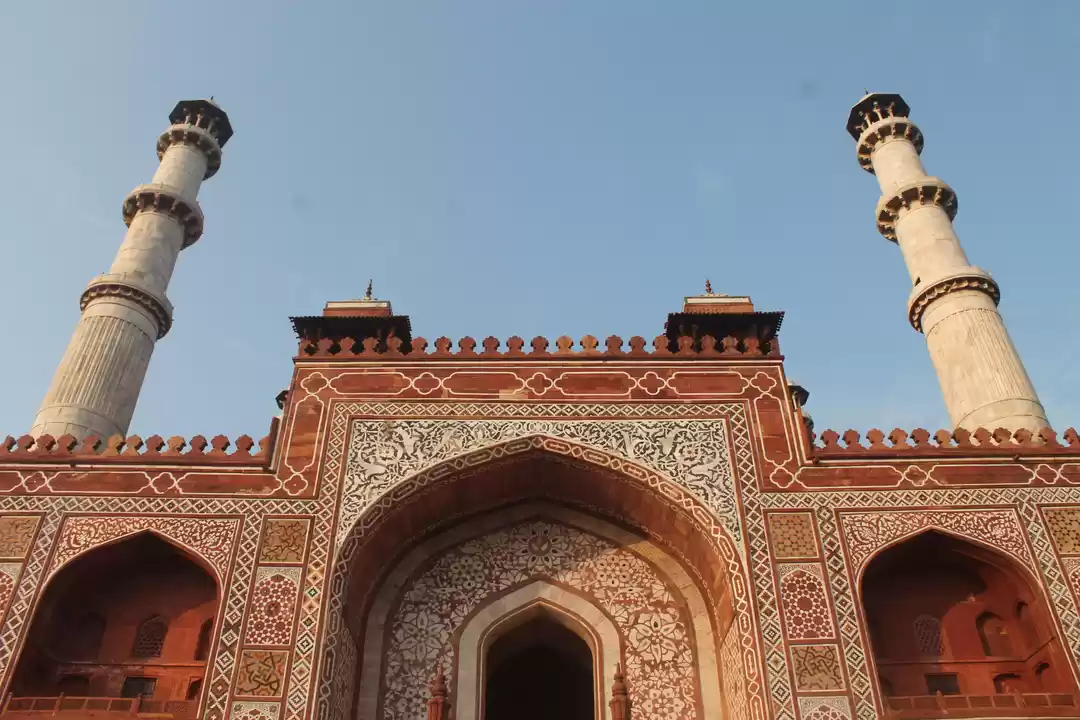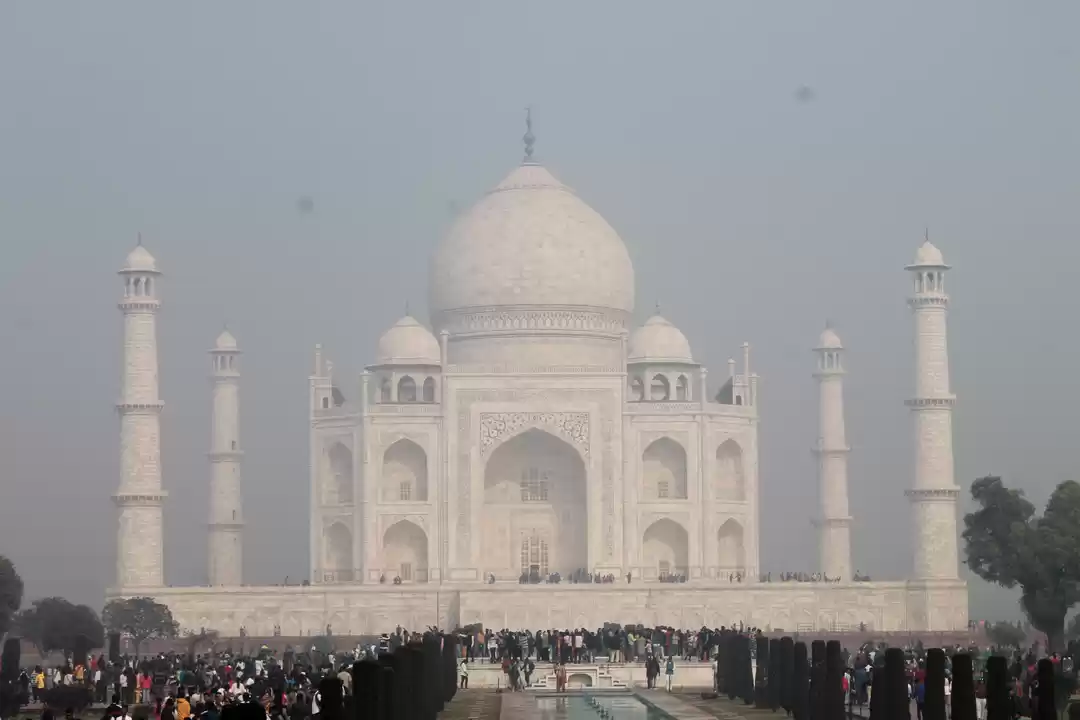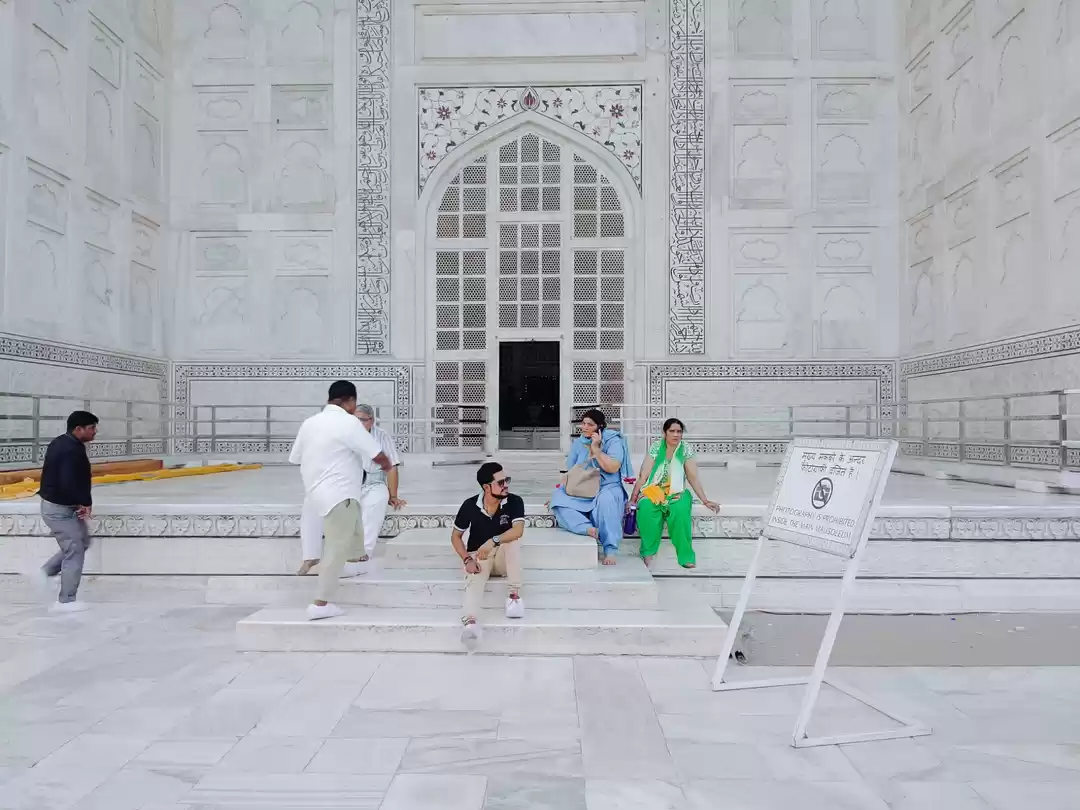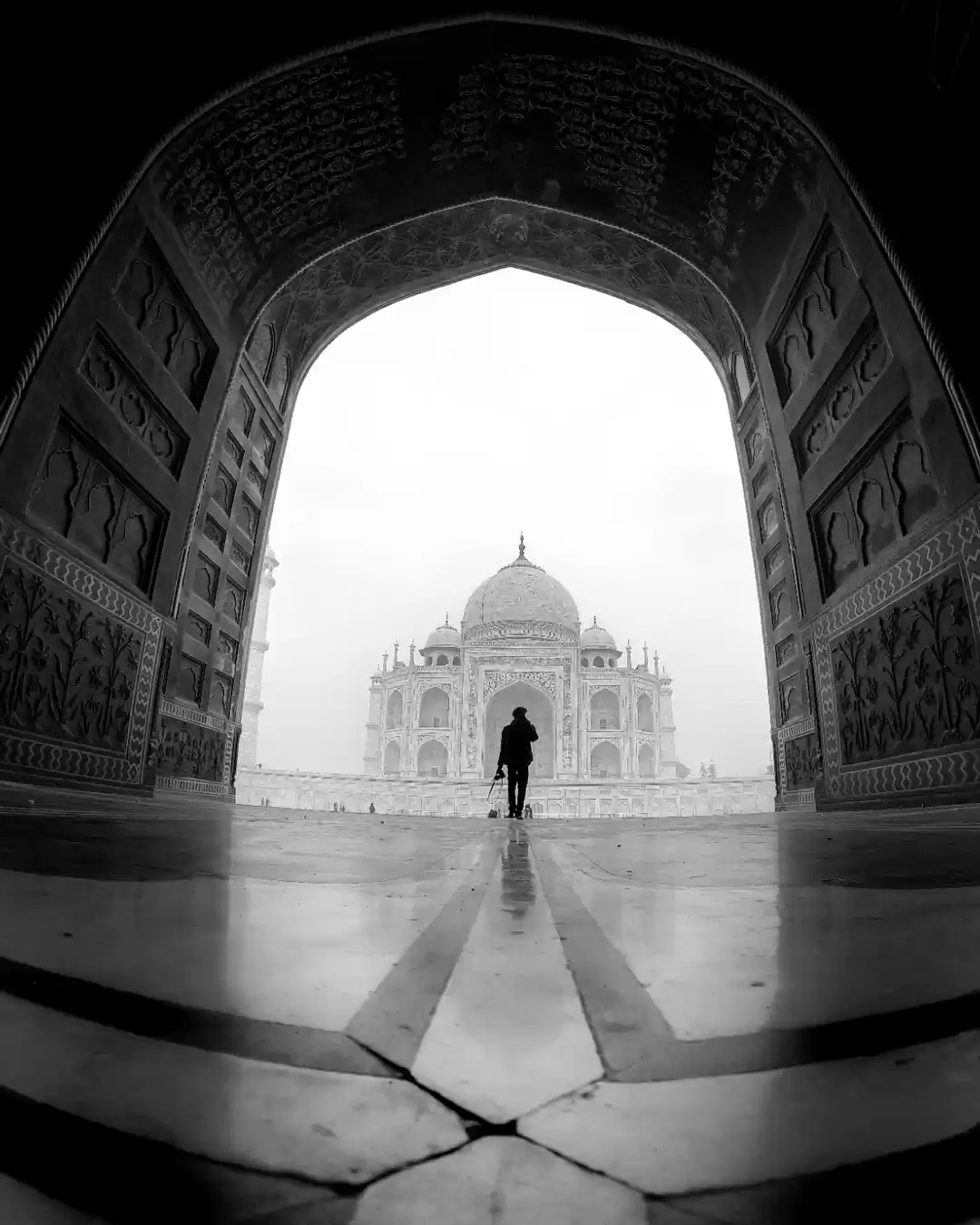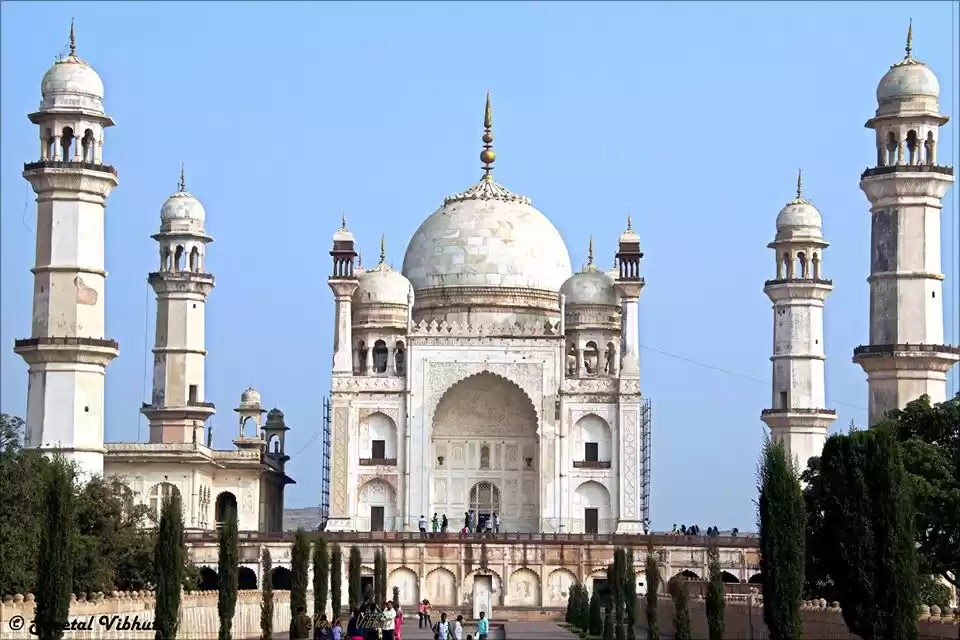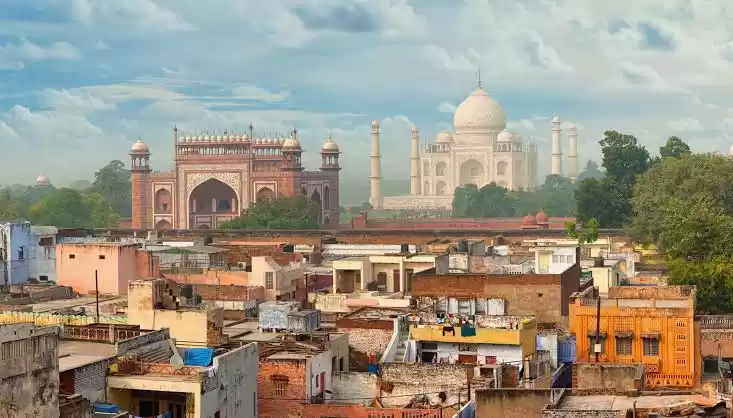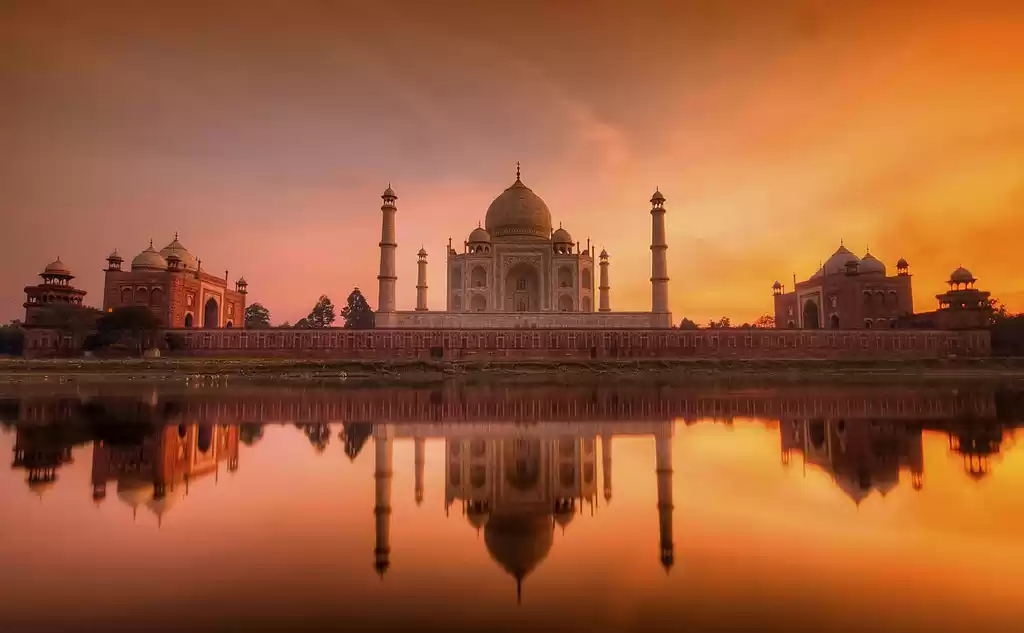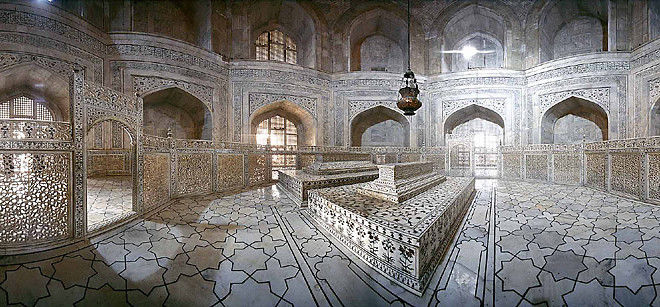
Taj Mahal (The epitome of love) is an architectural wonder built in the period 1631-48 by the great emperor Shah Jahan in the memory of his third wife Mumtaj Mahal. Taj Mahal is situated in the city Agra on the banks of river Yamuna. The Taj Mahal in itself is a marvelous and unique structure that symbolizes love of a husband for his beloved wife. It is also an architectural, technical and a scientific feat.
As you enter the main gateway which is known as the Darwaza-i rauza, you see the majestically dazzling white marbled structure standing right in the center surrounded by the four proud standing minarets around it and on the sides of it are the guest houses and a long rectangular shaped pool with fountains. Alongside the pool are the walkways leading to the main building and also to the other buildings. Don't just get complacent because of the Taj's outside beauty, the interiors of the Taj will also stun you and would make you say wow! On entering the main building you will see carvings on the wall, inscriptions in Persian, hand crafted marbled flooring with carvings of flowers such as lily. The exterior carvings are among the finest in Mughal architecture. There are calligraphy works done on every pishtaqs on every face or entrance of the building. Each with a different phrase from Persian language. As you enter inside the main building you see a large octagonal shaped structure with a dome on top. The floor inside is vast and if you want to hear the longest echoes of all time, it's here. The interior is no less stunningly amazing but also beautiful. The majestically designed and richly carved interiors brilliantly compliment the grandeur of the entire structure with subtleness. Interiors also consists works of precious and semiprecious gemstones. The basic elements of the structure are Persian while the large white marble structure that stands on the square base consists of a similar building with an arch shaped doorway known as Iwan, which is carved with exquisite calligraphy. On top of there is a large dome with finial.
You may also like to read: hawa mahal, jal mahal, lal mahal pune, thirumalai nayakar mahal
The main chamber houses the replica of the cenotaphs of Shah Jahan and Mumtaj Mahal which is surrounded by an octagonal jali screen which is carved with intricate piece of work with precious stones forming vines, fruits and flowers. While the actual tombs lies beneath in the lower levels of the Taj which is inaccessible to common public. The inner chamber is an octagonal shaped room which was built in such a way that any face can be used as an entry, although only the south garden facing door is used. The walls inside the chamber are about 25 meters high and consists of a false interior dome decorated with a sun like pattern. The architectural marvel lies in the dome as it performs two works: first, it is supporting the whole building or can say is distributing the weight of the whole building and second, from outside the dome measures about 44 meters and inside its just 25 meters which in itself is a technical feat. There are eight arches four on the lower and four on just top of it. The four top arches forming balconies or viewing area and each balcony's window has a jali or screening cut out from marble forming a shape of fruit or flower. Since Muslim tradition doesn't allow decoration of graves, hence the bodies of Shah Jahan and Mumtaj Mahal were put in a very plain cenotaphs which lies just beneath the replica. But these cenotaphs are facing towards the Mecca. Mumtaj Mahal's cenotaph is placed preciously in the center of the inner chamber having a rectangular base decorated with precious gemstones with calligraphic inscriptions with phrases from Holy Quran along with the ninety nine beautiful names of Allah. While Shah Jahan's cenotaph is placed beside Mumtaj Mahal but to the west, also facing in the direction of Mecca. Shah Jahan's cenotaph has almost the same decorative elements but with a higher base and is also bigger than the Mumtaj's cenotaph. On the top of the cenotaph consists of a pen box shaped sculpture which is a traditional funerary icon of the Mughals. The moods of Taj vary from dawn to dusk. While it's milky white in the morning light that is shed upon it by the rising sun. In the afternoon it is bright as a star. In the evening it looks as if it is golden gem shinning underneath a blue cover. And then comes the moonlit Taj, breaking into the night sky, majestic and simply beautiful in a sense that cannot be put in words. The most sensuous and appealing it looks is under the full moon light when it shines like a pearl making the visitor speechless and fall in love with the wonder on the very first sight. The romanticism and sheer majesty of this structure sounds unbelievably true. No matter why it is one of the seven wonders of the world. Coming out of such a majestic structure such as Taj is like coming out of an era that has gone, an era that has added to the world in not one but more than one way, an era that has been kept alive for so long by the wonder that is Taj Mahal itself.



